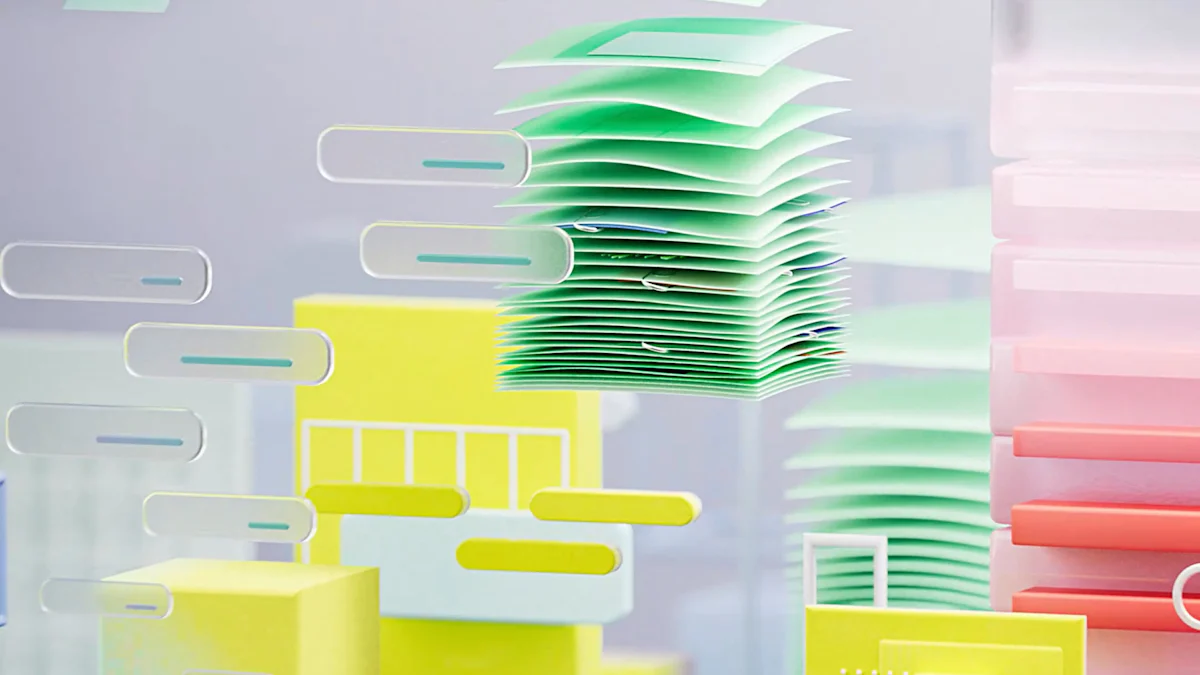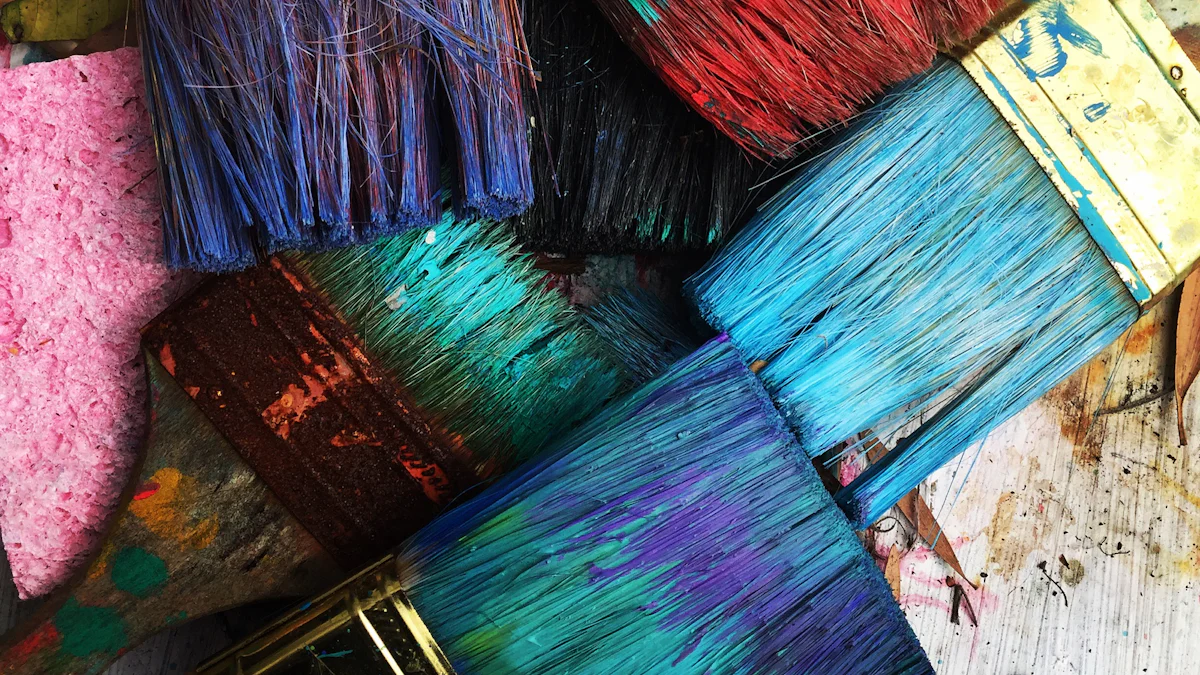Conflict in the Art World: The balance between AI Generator and traditional creation
The world of art is undergoing a seismic shift, particularly with the rise of AI-generated art. Tools like Dall-E, Stable Diffusion, and Midjourney are redefining how you perceive creativity. These technologies have unlocked new possibilities, allowing anyone to create visually stunning pieces with just a few clicks. Yet, this rapid transformation has sparked a growing tension. Traditional artists, who rely on years of skill and emotional depth, now face competition from algorithms that produce AI-generated art. The debate centers on a critical question: should innovation take precedence, or must the timeless values of traditional art be preserved?
Key Takeaways
AI tools like Dall-E and Midjourney are revolutionizing art creation, making it accessible to everyone, regardless of skill level.
While AI-generated art offers speed and innovation, it often lacks the emotional depth and intent that characterize traditional art.
The debate over authorship in AI art raises important questions about credit and ownership, challenging traditional definitions of creativity.
AI can serve as a creative partner, helping artists overcome blocks and explore new styles, rather than replacing human creativity.
Ethical concerns regarding copyright and the commercialization of AI art highlight the need for transparency and fairness in the art community.
The future of art lies in collaboration between AI and human artists, creating hybrid forms that blend emotional depth with technological precision.
Embracing AI as a tool can empower artists to innovate while preserving the unique qualities of traditional artistic expression.
The Rise of AI-Generated Art

How AI Tools Are Transforming Art Creation
AI has revolutionized the way art is created. With advanced algorithms, tools like Dall-E and Midjourney generate stunning visuals that rival traditional works. These tools rely on machine learning and neural networks to analyze vast datasets, enabling them to produce unique and innovative pieces. One notable example is Ai-Da, a robot artist that uses generative algorithms to create paintings and sculptures. Ai-Da’s work has been exhibited alongside traditional art in galleries worldwide, showcasing how AI-generated art is gaining recognition.
AI's influence extends beyond fine art. In design, AI image generators streamline processes by producing quick prototypes and concepts. Storyboarding for films and commercials has also benefited, as AI tools can generate detailed visuals in minutes. Commercial art industries now use AI to create logos, advertisements, and packaging designs, reshaping how businesses approach creativity. This transformation highlights AI's ability to expand the boundaries of artistic expression.
Democratizing Art Creation
AI tools have made art more accessible than ever. You no longer need years of training or expensive materials to create compelling visuals. AI image generators allow aspiring artists to experiment and produce professional-quality work with minimal resources. This democratization has opened doors for individuals who previously lacked access to traditional art education or tools.
However, this accessibility has sparked debate. Critics argue that AI-generated art undermines traditional creativity by prioritizing efficiency over skill. They question whether art created with algorithms can truly capture the depth and emotion of human-made works. While AI lowers barriers, it also challenges the value placed on traditional techniques and the effort behind them.
Limitations of AI-Generated Art
Despite its advancements, AI-generated art has notable limitations. Technical challenges persist, particularly in rendering complex details like hands and body proportions. These imperfections often reveal the mechanical nature of AI-created artworks, reminding viewers of the technology's constraints.
AI also struggles to replicate the emotional depth and memory that human artists bring to their work. While algorithms can analyze patterns and styles, they lack the lived experiences that inform human creativity. This absence of emotional understanding limits AI's ability to produce art that resonates on a deeply personal level. As a result, AI-generated art often feels detached, highlighting the irreplaceable role of human intuition in artistic expression.
Ethical and Legal Challenges in AI Art
The Debate Over Authorship and Ownership
The question of authorship in AI-generated art sparks intense debate. When you create art using AI tools, who deserves the credit? Is it you, the user who inputs the prompts and refines the output? Or does the credit belong to the developers who designed the algorithms? Some even argue that the AI itself, as the entity generating the work, should be acknowledged. This lack of clarity complicates how society views creative contributions in the digital age.
"Authorship is not just about creating; it’s about intent and originality," as highlighted in discussions about AI art.
AI lacks intent, which is a cornerstone of traditional creativity. Philosophers question whether AI-generated works can truly embody artistic intent. Without self-awareness or emotional depth, AI cannot make conscious decisions about its creations. This raises a critical issue: can something without intent or understanding hold authorship? These questions challenge long-standing definitions of creativity and force you to rethink what it means to be an artist.
Copyright and Data Usage Concerns
The use of copyrighted works in AI training datasets has become a contentious issue. Many AI models rely on vast amounts of data, often sourced from existing artworks, to learn patterns and styles. However, much of this data is used without the consent of the original creators. This practice raises ethical and legal concerns about whether AI-generated art infringes on the rights of traditional artists.
Tools like "Have I Been Trained?" aim to address this issue by allowing artists to check if their work has been included in AI training datasets. These tools empower you to take control of your creative rights. Meanwhile, legislative efforts in countries like the UK and the US are working to establish clearer guidelines. These laws aim to protect artists while fostering innovation in AI technologies. Striking this balance is essential to ensure fairness in the evolving art landscape.
Commercialization and Ethical Implications
The commercialization of AI-generated art introduces another layer of ethical complexity. Companies that develop AI tools often profit significantly, but they rarely address the concerns of traditional artists. Many artists feel sidelined as AI-generated works flood the market, often at lower costs and faster production times. This shift threatens the livelihoods of those who rely on traditional art forms.
Ethical AI development could provide a solution. Developers must prioritize transparency and fairness, ensuring that their tools do not exploit existing works or devalue human creativity. By addressing these challenges, you can help create an art ecosystem where innovation and tradition coexist. Ethical practices will not only protect artists but also enrich the creative possibilities for everyone.
Redefining Creativity and Artistic Expression
Can AI Be Truly Creative?
Creativity has long been considered a uniquely human trait. Margaret Boden, a renowned cognitive scientist, defines creativity as the ability to produce ideas that are new, valuable, and surprising. By this definition, you might wonder if AI can truly be creative. Generative AI tools, powered by generative algorithms, can indeed produce works that appear innovative and unexpected. However, these tools lack self-awareness and intent, which are essential components of human creativity.
AI operates by analyzing patterns and generating outputs based on data. It does not possess the ability to understand or feel the meaning behind its creations. For example, when an AI generates a painting, it does so without any emotional connection or purpose. This absence of intent raises questions about whether AI-generated works can genuinely qualify as creative. While AI demonstrates immense creative potential, it remains limited by its inability to replicate the depth of human creativity.
"Creativity is not just about producing something new; it’s about understanding why it matters," as many philosophers argue. Without intent or awareness, AI struggles to achieve this deeper level of expression.
Historical Context of Artistic Evolution
Art has always evolved alongside technological advancements. A pivotal moment in art history occurred when Marcel Duchamp introduced his famous urinal sculpture, challenging traditional definitions of art. Duchamp’s work demonstrated that art is not confined to skill or aesthetics but can also be about ideas and context. This shift in perspective paved the way for new forms of artistic expression.
Similarly, technological revolutions like photography reshaped the art world. When photography emerged, many feared it would replace traditional painting. Instead, it expanded the boundaries of art, allowing painters to explore abstract and impressionistic styles. Today, generative AI represents another transformative force. It offers artists new tools to experiment with and pushes the limits of what art can be. By understanding these historical shifts, you can see how technology and art often coexist rather than compete.
Philosophical Insights on Creativity
Philosophers like Marcus du Sautoy challenge the notion that creativity is a magical process exclusive to humans. He argues that AI can break repetitive creative patterns, offering fresh perspectives that humans might overlook. Generative algorithms, for instance, can produce unexpected combinations of colors, shapes, and styles, inspiring artists to think differently.
However, human creativity remains deeply rooted in emotions and cultural context. When you create art, your experiences, memories, and feelings shape the outcome. AI lacks this emotional depth, which limits its ability to connect with audiences on a personal level. While AI can assist in the creative process, it cannot replace the unique insights that come from human expression. This interplay between AI and human creativity highlights the importance of collaboration rather than competition.
Collaboration Between AI and Human Artists

AI as a Creative Partner
AI has emerged as a powerful ally for artists, offering tools that can unlock new creative possibilities. When you face creative blocks, AI as a creative partner can serve as a source of inspiration.
For instance, many artists use AI algorithms to experiment with styles and techniques they might not have considered before. AI-generated visuals can act as a springboard, pushing you to explore uncharted territories in your artistic journey. This collaborative process allows you to break free from traditional constraints and discover innovative approaches to your craft. AI doesn’t replace your creativity—it enhances it, giving you the freedom to focus on refining and personalizing your work.
“AI is not here to take over; it’s here to collaborate,” as many artists have observed. By embracing AI as a creative partner, you can expand your artistic horizons and redefine what’s possible in the world of art.
The Future of Artistic Collaboration
The art world is moving toward a future where traditional and AI-generated art coexist harmoniously. This coexistence opens the door to hybrid art forms that blend human creativity with the precision of AI algorithms. Imagine a painting where an artist’s brushstrokes merge seamlessly with AI-generated patterns, creating a truly collaborative artwork. Such pieces showcase the potential of combining human intuition with machine efficiency.
This collaborative future doesn’t diminish the value of traditional art. Instead, it highlights the unique strengths of both approaches. Traditional art brings emotional depth and cultural context, while AI-generated art offers speed and innovation. Together, they create a dynamic ecosystem where each complements the other. As an artist, you have the opportunity to shape this future by exploring how AI can enhance your creative process.
Challenges and Opportunities
While the collaboration between AI and human artists holds immense potential, it also presents challenges. One of the biggest hurdles is balancing innovation with the preservation of traditional artistic values. As AI-generated artworks become more prevalent, you might wonder how to maintain the authenticity and emotional depth that define human creativity.
Ethical and philosophical concerns also come into play. Questions about authorship, originality, and the role of AI in the creative process need thoughtful consideration. Addressing these issues requires open dialogue and a commitment to ethical practices. By fostering a collaborative environment, you can ensure that AI serves as a tool for empowerment rather than a source of conflict.
The opportunities, however, far outweigh the challenges. AI image tools and algorithms give you the chance to experiment, innovate, and push boundaries. They allow you to focus on what truly matters—expressing your unique vision and connecting with your audience. By embracing this collaborative approach, you can create artworks that are not only visually stunning but also deeply meaningful.
By embracing collaboration, you can unlock new possibilities where AI complements human expression.
FAQ
Can AI-generated art possess the emotional depth and authenticity of human-made creations?
Critics often argue that AI-generated art lacks the emotional depth and authenticity that define human-made creations. They believe that algorithms cannot replicate the lived experiences and feelings that artists pour into their work. However, supporters view AI as a tool that enhances the artistic process. While AI may not feel emotions, it can produce works that evoke strong reactions in viewers. The emotional connection may come from how you interpret the art rather than the process behind its creation.
What are the ongoing debates about the ownership and authorship of AI-generated art?
Ownership and authorship of AI-generated art remain hotly debated topics. When you create art using AI tools, questions arise about who owns the rights. Is it you, the user who provided the prompts? Or do the developers of the AI software hold the rights? Some even suggest that AI itself could be considered a co-creator. These debates challenge traditional notions of authorship and force you to rethink how creative contributions are defined in the digital age.
Can AI art be highly original in terms of style?
AI-generated art can appear highly original in style. It combines patterns and elements from vast datasets to create unique outputs. However, AI relies on pre-existing data, which means it does not truly understand originality as humans do. While the results may seem innovative, they are often rooted in the styles and techniques of past works. This raises questions about whether AI can genuinely innovate or if it simply reinterprets what already exists.
How does AI impact traditional artists?
AI tools have introduced both challenges and opportunities for traditional artists. On one hand, they provide new ways to experiment and innovate. You can use AI to explore styles, overcome creative blocks, or enhance your workflow. On the other hand, the rise of AI-generated art has increased competition, especially in commercial markets. Many artists worry about their work being undervalued as AI-produced pieces flood the industry. Balancing these impacts requires thoughtful adaptation and a focus on what makes human creativity unique.
Are there ethical concerns with AI-generated art?
Yes, ethical concerns surround AI-generated art. One major issue involves the use of copyrighted works in AI training datasets. Many AI models learn from existing artworks without the consent of the original creators. This practice raises questions about intellectual property rights and fairness. Additionally, the commercialization of AI tools often benefits companies more than individual artists. Addressing these concerns requires transparency, ethical practices, and legal frameworks to protect creators.
Can AI replace human artists?
AI cannot fully replace human artists. While it excels at generating visuals quickly and efficiently, it lacks the emotional depth, intent, and cultural context that define human creativity. Art is not just about producing images; it’s about expressing ideas, emotions, and stories. AI can assist you in the creative process, but it cannot replicate the unique insights and personal experiences that you bring to your work.
How does AI democratize art creation?
AI has made art creation more accessible than ever. With tools like Dall-E and Midjourney, you don’t need years of training or expensive materials to produce professional-quality work. These tools lower barriers, allowing more people to explore their creativity. However, this democratization also sparks debate. Critics argue that it prioritizes efficiency over skill and may devalue traditional artistic techniques. The challenge lies in finding a balance that respects both accessibility and craftsmanship.
What are the limitations of AI-generated art?
AI-generated art has several limitations. It often struggles with technical details, such as rendering hands or body proportions accurately. These imperfections reveal the mechanical nature of AI creations. Additionally, AI lacks the ability to understand emotions or cultural nuances. This absence of depth can make its work feel detached or impersonal. While AI offers impressive capabilities, it cannot replicate the richness of human intuition and experience.
How can AI and human artists collaborate?
AI and human artists can collaborate to push creative boundaries. You can use AI as a partner to explore new styles, generate ideas, or refine your concepts. For example, AI tools can help you visualize complex designs or experiment with techniques outside your comfort zone. This partnership allows you to focus on the emotional and narrative aspects of your work while leveraging AI’s efficiency and precision. Collaboration, rather than competition, creates opportunities for innovation.
What does the future hold for AI-generated art?
The future of AI-generated art lies in collaboration and coexistence. Traditional and AI-driven approaches can complement each other, creating hybrid art forms that blend human intuition with machine precision. As an artist, you have the chance to shape this future by embracing AI as a tool rather than a threat. By addressing ethical and legal challenges, the art world can foster an environment where innovation thrives alongside tradition.
See Also
Transforming Artistic Expression With Midjourney's Free AI Tool
Discovering Top Alternatives to Midjourney for AI Art
Understanding Midjourney's Guidelines and Their Ethical Implications

